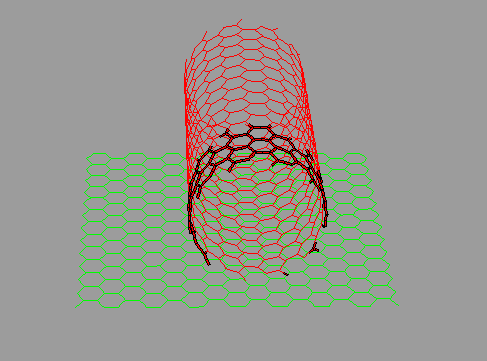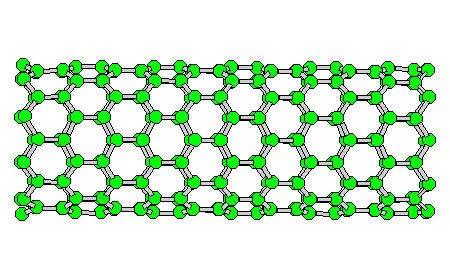_Part of the process (discharging) for electric nanotubes
Propagation of a large current from two carbon electrodes in the space containing the plasma substance, which leads to the creation of a spark in the gap between the two electrodes in (nanotubes)
Researcher and author: Dr. ( Afshin Rashid)

Note: In this propagation method, a large current is passed through two carbon electrodes in the space containing the plasma substance, which leads to a spark in the gap between the two electrodes.
In this case, more than 30% of the ash produced are carbon nanotubes. A new method for chemical modification of carbon nanotubes, which includes radio frequency activation of plasma glow, followed by chemical reactions characteristic of plasma functional groups, produces carbon nanotubes. For example, graphene chains on aligned carbon nanotubes have been reacted with electronic conduction and immobilized through the formation of base Schiff bonds, which are stabilized by reduction with carbon nanotube particles.
_04vq.gif)
Using the same reaction, we also grafted chains of oxidized graphene with pre-labeled chemically dispersed grafts onto carbon nanotubes by reacting with CNT carbon nanotubes. In this method, plasma propagation of metal nanotubes and electronic nanoconductors labeling graphene allows the surface immobilization reaction to be done simply by measuring light radiation. Single-layer conductive carbon nanotubes (CNTs) are grafted.

There are strong bonds between the atoms of nanotubes, which makes them highly resistant to the effects of tensile forces. For example, the force required to break a carbon nanotube is many times the force required to break a piece of steel with a thickness equivalent to one nanotube. In nanotubes, in addition to creating high strength, interatomic bonds enable easy plasticity and even twisting in them. While steel is only resistant to tensile forces and does not have the necessary flexibility against twisting. Due to the good strength and plasticity of nanotubes, they are used as (strings) in composite materials with metal, polymer and ceramic bases.
Conclusion :
CNT carbon nanotubes have a fullerene-like structure whose ends can be closed. The name of these nanostructures is derived from their physical shape, in which tubular graphene sheets with different angles of tubularization lead to tubes with different symmetry. The tube angle and tube radius determine the appearance of metallic or semiconductor properties in these nanostructures.
Researcher and author: Dr. ( Afshin Rashid)
Specialized doctorate in nano-microelectronics


